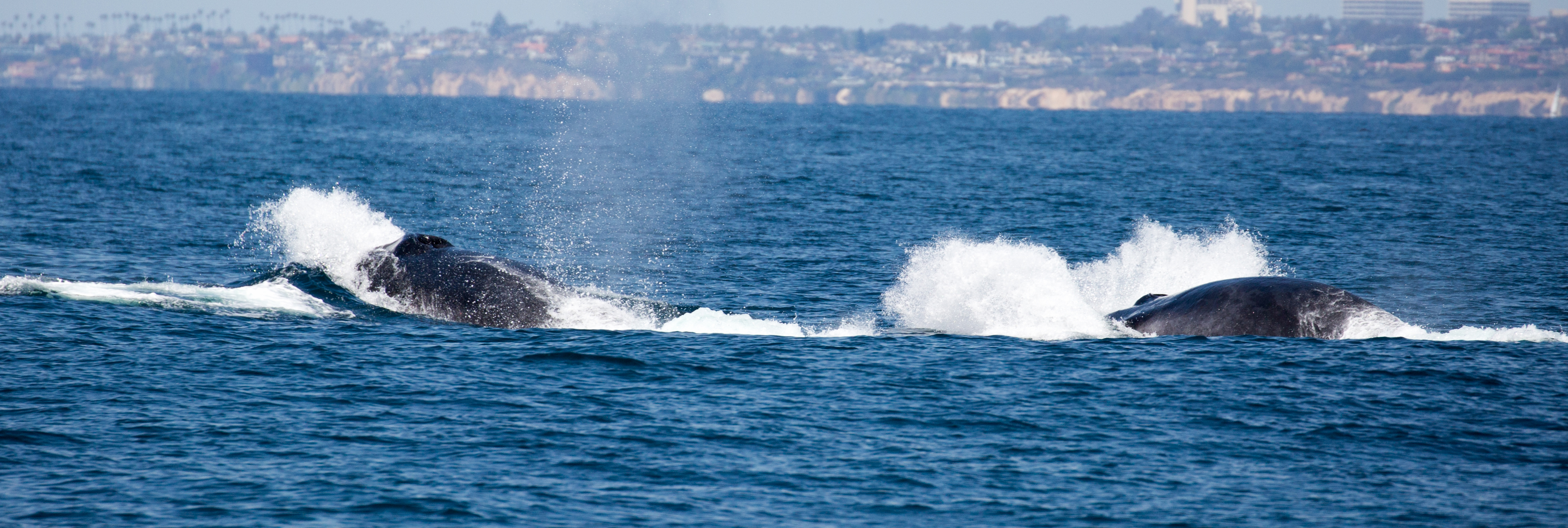FINBACK WHALE Watching (Balaenoptera Physalus)

The Finback whale takes a back seat to the giant blue whale in size but is still the second largest animal on earth. The Finback Whale is known for its speed, traveling at upwards of 35 miles per hour. It is often viewed in Southern California in the same areas as Blue Whales, which happens to be areas rich in krill, a favorite food source for the Finback Whale. Finback Whales tend to travel in groups of 6 to 10 and occasionally can congregate to groups of up to a hundred or more during prolific feeding opportunities.
Finback Whales are separated into three distinct populations: Southern Hemisphere, Northern Pacific, and Northern Atlantic. There are about 60,000 Finback Whales worldwide and they are recovering after being placed on the endangered list in 1966. Finback Whales migrate to the equator to breed and have a gestation period of about one year.
The Finback Whale has a very loud call and is used for both communicating with other Finback Whales and as a means to locate rich food sources.
The Finback Whale lives for about 60-70 years and has few natural predators other than man. They feed for only 9-10 months of the year and fast during their breeding period. It is amazing that such a large animal can survive for months without food. The finback survives by living on fat reserves built up during the time they spend eating.
Finbacks were very rare off Southern California waters until about 2005 when they started appearing in the summer and fall months in large numbers. During the last few years, Finback Whales have been viewed almost year-round in Southern California with dozens viewed in a single area lunge feeding for several months at a time.


